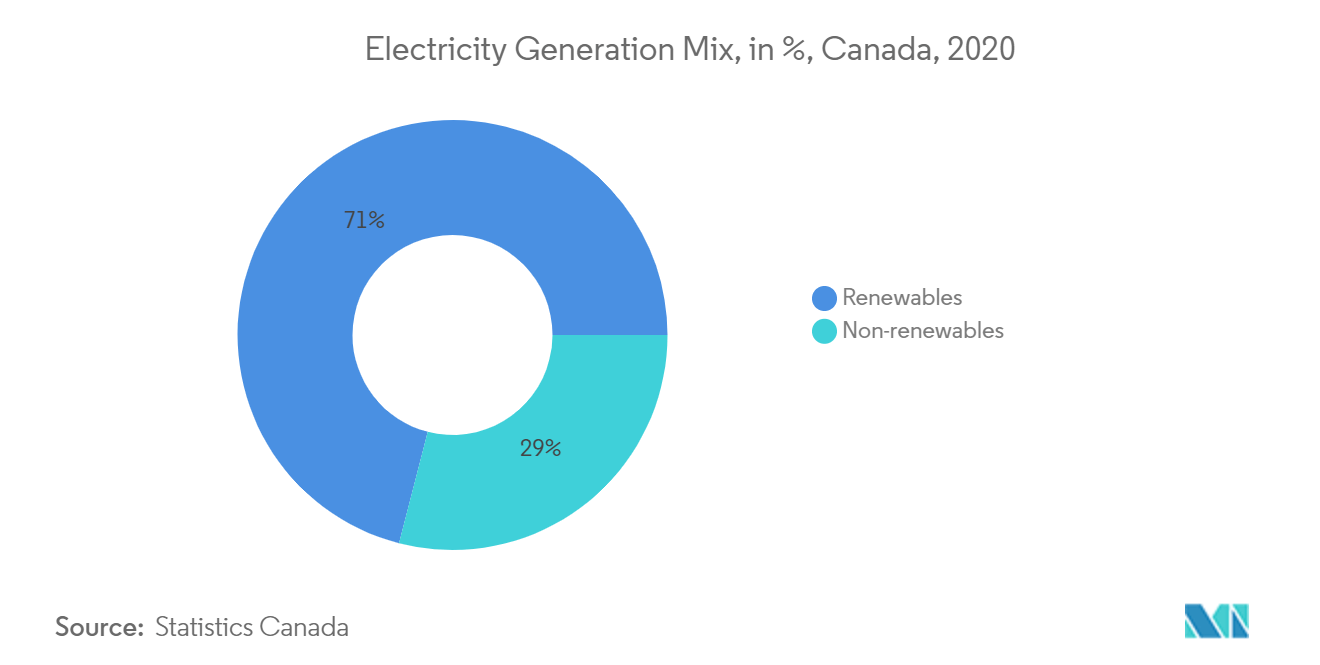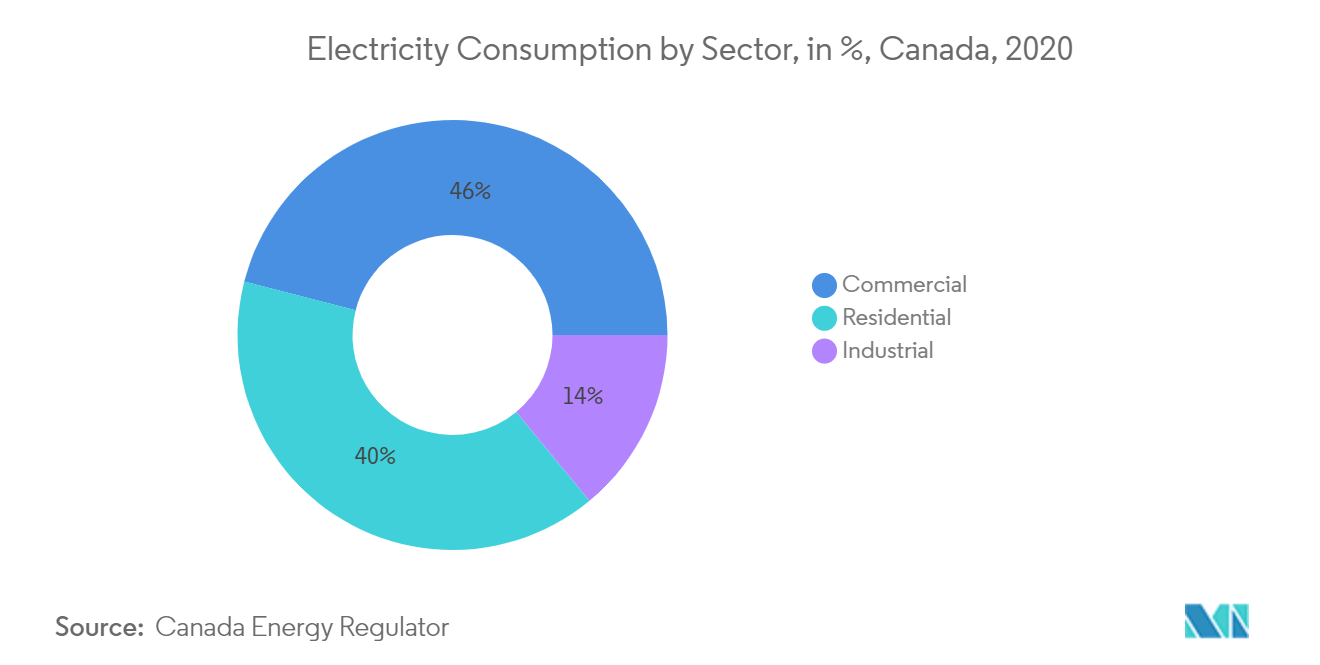Market Trends of Canada Power Industry
This section covers the major market trends shaping the Canada Power Market according to our research experts:
Renewables Expected to Witness Significant Growth
- Canada's energy sector is naturally facilitated with tremendous renewable resource potential. Hydro energy dominates the renewable electricity generation portfolio, and the country has witnessed a fast-paced growth in wind and solar energy-based power generation in the recent picture. Biofuels also form a small part of the renewable energy mix of the country. The non-renewable sector, which comprises natural gas, oil, coal, and nuclear energy, has already been bullied by renewables recently.
- The share of renewables in the electricity mix (including hydro energy) was recorded as 71% in 2020. The growth was largely driven by the growth in solar and wind power generation capacity. It was noted that around 70 MW of solar PV capacity was installed in 2020, along with an additional 166 MW of wind-power generation. The technologies made up to 3000 MW of solar and 13588 MW of wind capacity as of 2020. A number of projects are still about to be added to the renewable power capacity in the country.
- For example, in April 2021, Canadian bakery products company Bimbo Canada entered into two VPPAs (Virtual Power Purchase Agreements) with RES Canada to buy power from two upcoming wind and solar power plants in the country. The two 15 year-VPPAs will ensure a 50 MW electricity supply for the company's 16 bakeries, 14 distribution centers, and 191 depots. The power plants will come into service by the end of 2022.
- Further, renewable power also made inroads across the commercial sector in the country. In June 2021, Amazon, the largest corporate buyer of renewable energy, planned to buy power from a 375 MW solar farm, which is currently under construction and will be operational by 2022. It is believed to be Amazon's second renewable energy project in Alberta, which will bring Amazon's capacity in Canada to more than 1 million MWh.
- Moreover, the country has several incentive programs like the Emerging Renewable Power Program, which is expected to provide USD 200 million for the expansion of renewable projects. Additionally, in June 2021, a USD 964 million program was launched to support smart renewable energy and grid modernization projects in Canada.
- Such developments are poised to forecast the growth of a fast-paced renewable in the country.

Growth in Industrial Sector Expected to Drive the Market
- The country has witnessed a steady growth in the industrial sector over the last decade. The fastest-growing industries in the country include the construction, manufacturing, and mining industries.
- The share of the industrial sector in electricity consumption was recorded at around 14% in 2020, after the residential and commercial sectors. Though the sector is behind the latter two, this will not be the case in the near future. The country has tabled many new plans to develop the industrial sector with upcoming construction and manufacturing projects.
- As an example, the country has planned the construction of Fleetwood Reservoir and Water Main Plant in the third quarter of 2021. The project targets the provision of clean drinking water to growing communities to the south of Fraser River. It will be operational by 2024. Operational of such projects is expected to increase the demand for power in Canada.
- Furthermore, in 2021, Canada added a new construction project to the yearly list, Burnaby Hospital Redevelopment. The project involves the construction of a 314-bed hospital comprising two towers in British Columbia, Canada. The USD 1.1 million project is expected to be completed by 2028.
- Hence, the operation of such projects is expected to increase the demand for power in Canada during the forecast period.


